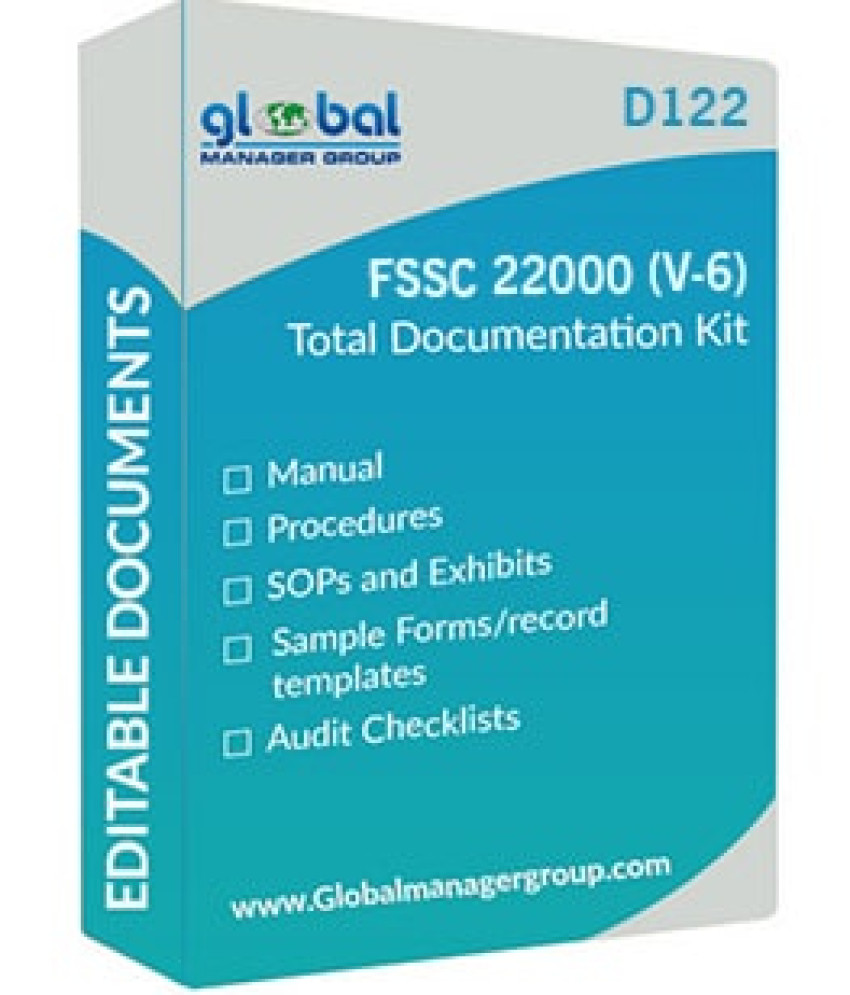
In today's globalized food industry, securing consumer trust and navigating complex regulations demand a proactive approach to food safety. Enter ISO 22000, the international standard for food safety management systems (FSMS). A well-crafted ISO 22000 manual serves as the roadmap in your organization's journey towards robust food safety and sustained success. Here, we delve into pleasant practices for crafting and imposing an ISO 22000 manual that serves as a strategic asset for your business.
Building a Foundation:
Step one in crafting your manual is making sure stable information of your business organization’s specific context and operational scope. This includes identifying hazards, control measures, and critical control points (CCPs) throughout your food chain, from farm to fork. This essential self-evaluation sets the level for a tailored and effective FSMS.
The Power of Clarity:
Your manual should be a clear, concise, and accessible document. Avoid overwhelming technical and prioritize trustworthy language understandable by using all employees concerned with your food’s safety processes. Constant formatting, visuals, and a logical float enhance the consumer's enjoyment and facilitate powerful implementation.
Documenting the Core:
On the coronary heart of your manual lies the documented FSMS, outlining your agency's method of managing food safety risks. This consists of:
• Food Safety Policy: A concise statement of your commitment to food safety, endorsed by top management.
• Organizational Structure: Actually, outline roles and responsibilities within the FSMS, empowering individuals to very own their component in food safety.
• Procedures: Describe exact commands for critical food protection methods, including chance identity, monitoring CCPs, and corrective movements.
• Monitoring and Corrective Actions: Establish clear protocols for monitoring CCPs, recording data, and promptly addressing any deviations or non-conformities.
• Traceability: Report your device for monitoring and identifying food products at some point in the supply chain, facilitating consideration and risk containment.
• Internal Audits: Define the agenda and scope of inner audits to evaluate the effectiveness of your FSMS and become aware of regions for development.
Living Document, Continuous Growth:
Remember, your manual is not a static document. It should be a living tool, evolving with your organization and continuously adapting to changes in regulations, market demands, and operational procedures. Regular reviews, updates, and employee training are crucial to maintaining the efficacy of your FSMS and maximizing its benefit.
Leveraging Technology:
Embrace the power of technology to enhance your manual's accessibility and effectiveness. Digital platforms offer features like document control, version history, and searchable databases, streamlining recordkeeping and promoting knowledge sharing within your organization.
Investing in Expertise:
Seeking guidance from qualified consultants or trainers specializing in ISO 22000 can be invaluable. Their expertise can expedite the development and implementation of your guide, making sure alignment with the standard's requirements and satisfactory practices.
Beyond Compliance, Strategic Advantage:
Enforcing an ISO 22000 manual is going past mere compliance. It signifies a strategic commitment to food safety, boosting consumer confidence, brand reputation, and market competitiveness. A properly designed and diligently applied manual can:
• Reduce foodborne illness risks and product recalls.
• Optimize operational efficiency and cost savings.
• Facilitate smoother regulatory inspections and certifications.
• Enhance employee engagement and ownership of food safety.
• Open doors to new market opportunities and partnerships.
Conclusion:
By adopting a strategic technique for crafting and imposing your ISO 22000 manual, you empower your employer to reap and keep operational excellence in food safety. Remember, food safety is not just a regulatory requirement; it's a commitment to protecting consumers and delivering the highest quality products. With a robust FSMS documented in a well-designed manual, you can secure your place as a trusted leader in the competitive food industry, unlocking long-term success and growth.


